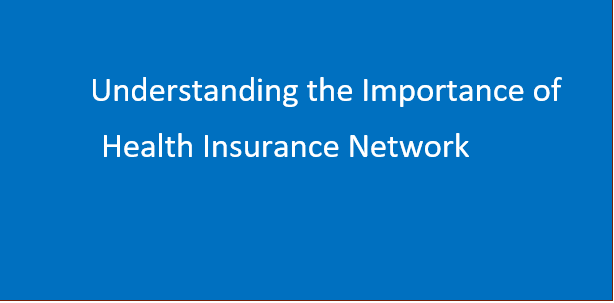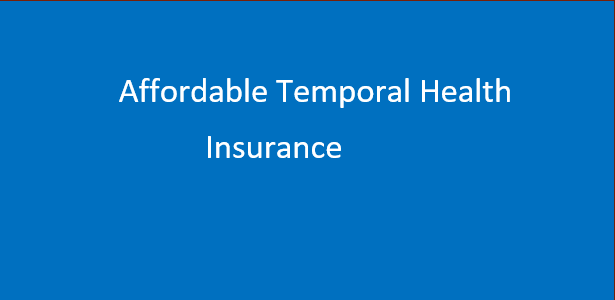Choosing the Right Individual Health Policy – As an individual looking to protect my health and financial well-being, choosing the right health insurance plan is one of the most important financial decisions I can make
With so many options, deductibles, and fine print, it can be overwhelming to know where to start.
In this blog post, I will walk through the key questions to ask and factors to consider when choosing an individual health policy that meets your needs and budget.
I’ll explore the pros and cons of different plan types like HMOs, PPOs, and HDHPs.
I’ll provide tips on comparing benefits, avoiding gaps in coverage, finding affordable premiums and out-of-pocket costs, accessing care, and more.
Whether you are self-employed, unemployed, or your employer doesn’t offer health benefits, you can take control of your healthcare by arming yourself with information.
Read on for expert advice on how to select the right individual health insurance plan for your well-being.
How do I choose the right individual health insurance plan for me?
Choosing the right individual health plan starts with understanding your specific health needs and priorities.
Consider factors like:
- Health status: Do you have any ongoing medical conditions or take regular prescriptions? This will impact the type of plan you need.
- Preferred doctors and hospitals: Make sure your preferred providers are in-network with the plan’s coverage.
- Plan type: HMO, PPO, POS, HDHP? Compare network flexibility, deductibles, copays, etc.
- Covered benefits: Look for a plan that covers your essential health services.
- Prescription drugs: Check if your medications are covered and at what cost tier.
- Budget: Balance premiums, deductibles, and maximum out-of-pocket costs.
- Tax savings: An HDHP with HSA may offer tax-free savings.
Consider working with an insurance broker who can help compare plans across insurers and find the optimal fit based on your needs and priorities.
Doing your research is key to making an informed decision.
What are the different types of individual health insurance plans?
The main types of individual health insurance plans include:
- HMO (Health Maintenance Organization): Requires a primary care physician referral to see specialists. More affordable premiums but less flexibility.
- PPO (Preferred Provider Organization): Provides more network flexibility to see in-network doctors without referrals. Higher premiums.
- POS (Point of Service): Hybrid of HMO and PPO plans. Lower costs when staying in-network.
- HDHP (High Deductible Health Plan): Lower premiums but higher deductibles. Can be paired with a tax-advantaged Health Savings Account (HSA).
- Catastrophic: Minimal coverage for those under 30 or with hardship exemptions. Very high deductibles but low monthly premiums.
Knowing the differences can help you select the right individual health plan for your budget and care preferences.
One key factor to consider when comparing individual health insurance plans is your budget – both for monthly premiums and out-of-pocket costs when you get care.
On the premium side, you’ll want to look at the total monthly amount you’ll pay for the plan.
For out-of-pocket costs, look at the deductible, copays, and maximum out-of-pocket cap.
A plan with lower premiums often comes with higher deductibles and copays.
Balance your budget and risk – a higher premium plan can be worth it if you expect substantial healthcare needs.
Tax-advantaged HSAs can help offset high-deductible health plan costs. Work within your budget constraints when choosing a plan.
If you have access to an employer-sponsored group health plan, that is likely your best and most affordable option for coverage.
However, if your employer does not offer health benefits, individual health insurance plans allow you to get coverage directly from private insurers or the Health Insurance Marketplace.
While premiums are usually higher for individual plans, you still have many options to find an affordable health insurance policy that meets your needs.
Here are some tips for finding affordable individual coverage:
- Compare plans in your state’s ACA Marketplace during open enrollment. Tax credits and subsidies can significantly lower costs for qualifying applicants.
- Consider getting quotes from private insurers outside the Marketplace.
- Choose a higher deductible plan to reduce monthly premiums.
- See if you qualify for Medicaid based on income.
- Compare options like health sharing ministries and short-term plans.
Shopping around is key to finding the best rates on individual health coverage. Partnering with an insurance broker can help you navigate the process.
What health benefits are most important for me to have in a plan?
When choosing an individual health plan, one of the most important benefits to evaluate is the plan’s prescription drug coverage.
Look at the plan’s formulary – the list of covered medications. Make sure your specific medications are included and check if they are generic only or have brand name options. Also understand the cost tiers for each drug.
You’ll want to minimize expensive specialty drugs and pick a plan that places your drugs on lower, affordable tiers.
Having robust prescription coverage can ensure you can access and afford the medications you need for your health.
Don’t wait until after you enroll to check on prescription benefits – make sure they align to your needs upfront when selecting a plan.
How do I avoid gaps in health insurance coverage?
One common concern when transitioning from an employer plan to individual health insurance is avoiding gaps in coverage.
A gap could leave you vulnerable and facing issues like premium hikes for lapsed coverage.
Here are some tips to avoid gaps when securing individual health insurance:
- Time your new plan effective date to start the day after your prior coverage ends.
- Avoid cancelling current coverage until new coverage is in place.
- Consider opting into COBRA from an employer plan as a temporary bridge.
- Check if you qualify for a special enrollment period that allows you to enroll anytime.
- Keep detailed records as proof of prior continuous coverage.
- Know the open enrollment windows to enroll on time.
- Consult with a licensed health insurance broker who can coordinate timing and ensure you remain covered.
With proper planning, you can seamlessly transition from employer group insurance to an individual or family health plan.
Can I get individual health insurance if I have a pre-existing conditions?
Thanks to the Affordable Care Act (ACA), insurers can no longer deny coverage or charge more for pre-existing conditions.
Some key facts:
- You cannot be turned down for health insurance due to health history or status.
- All ACA Marketplace and private individual plans must provide the 10 Essential Health Benefits.
- You may have limited plan options if your state hasn’t expanded Medicaid eligibility.
- Short-term health plans can still exclude pre-existing conditions.
- Age, location, and tobacco use can still impact premium costs.
Make sure to disclose any pre-existing conditions when applying to avoid issues later.
Those with pre-existing conditions may specifically benefit from a private plan with broader care networks and services. Working with a broker can help find appropriate individual coverage.
If the cost of individual health insurance premiums is unaffordable for you, financial assistance is available via two primary options:
ACA Subsidies
- Income-based tax credits and cost-sharing reductions available through the Marketplace.
- Must meet income thresholds based on Federal Poverty Levels.
- Tax credits can lower premium costs significantly.
Medicaid
- Joint federal and state program that provides coverage based on income.
- Expanding Medicaid eligibility in your state improves accessibility.
- No monthly premium for those who qualify.
- Covers essential health services.
Additionally, some employers and providers offer financial assistance programs for insurance. Understanding all financial help available will make individual health coverage more attainable.
What financial assistance programs are available to help pay for individual health insurance?
When it comes to choosing an individual health insurance plan, you’ll need to carefully compare the benefits covered. Some of the most important benefits to evaluate beyond major medical coverage include:
- Prescription drug coverage: Look for affordable generic and brand name options.
- Mental health services: See how inpatient and outpatient mental healthcare is covered.
- Lab work: Such as blood tests, x-rays and diagnostic imaging.
- Chronic illness care: Like diabetes and asthma management programs.
- Preventive services: Check coverage for routine checkups, immunizations, cancer screenings and annual physicals.
- Pediatric care: Such as well child visits, vaccines and pediatrician access.
- Maternity care: Pre-natal, delivery and post-partum services.
Comparing benefits across plans ensures you get comprehensive coverage tailored to your health needs.
Key Takeaways
- Compare all plan options including HMOs, PPOs, POS plans and HDHPs
- Check that your preferred doctors, hospitals, and medications are covered
- Don’t forget to factor in monthly premiums, deductibles, copays, and maximum out-of-pocket costs
- Work with a licensed health insurance broker to help select the right plan
- Time enrollments carefully and avoid gaps in coverage
- Financial assistance is available – check if you qualify
- Prioritize benefits like prescription drugs, chronic illness care, and preventive services
Conclusion
In conclusion, choosing the optimal individual health insurance plan involves researching plan types, comparing benefits and costs, evaluating your healthcare needs, and understanding financial assistance options.
Partnering with an insurance broker can help identify the right plan while avoiding pitfalls. Investing time upfront to understand all of your coverage options is essential to securing an individual health policy that provides quality, affordable coverage so you can maintain your well-being.
FAQ on choosing individual health insurance:
Q: How do I choose between an HMO and PPO?
A: HMOs require referrals to see specialists while PPOs offer more provider flexibility without referrals. PPOs have higher premiums but lower barriers to care.
Q: Should I use a health insurance broker?
A: Brokers can help compare plans across insurers and provide guidance to ensure you pick the right plan. Their services are usually free for consumers.
Q: Can I get coverage with a pre-existing condition?
A: Yes, the ACA prohibits insurers from denying coverage based on pre-existing conditions. All plans must cover treatment for pre-existing conditions.
Q: What financial assistance is available?
A: Tax credits and subsidies are available via the ACA Marketplace. Medicaid provides coverage for low-income individuals.
Q: When is open enrollment?
A: The individual market open enrollment period is typically November 1 through December 15 for coverage effective January 1.



